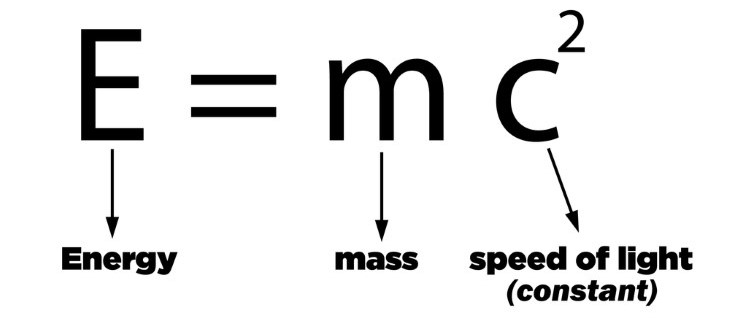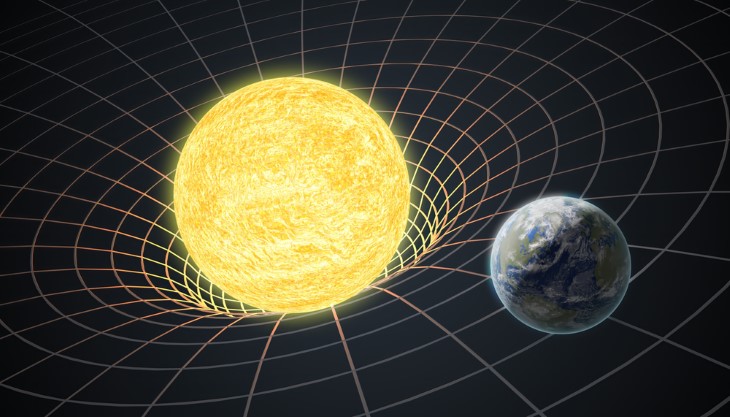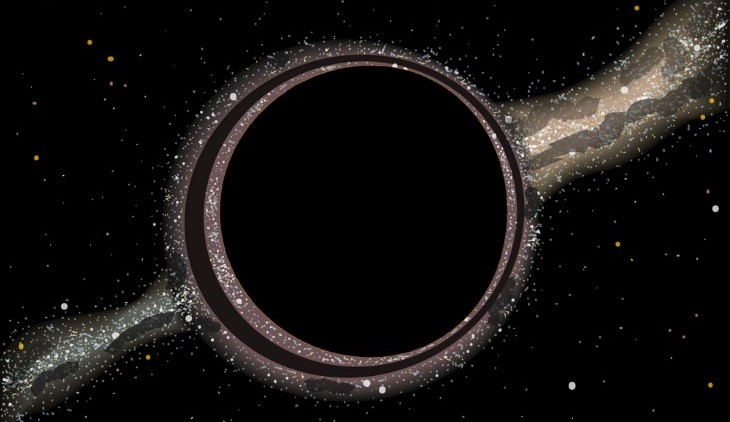
Einstein's theories fundamentally altered our perception of space, time, mass, energy, and gravity. By questioning the established norms of physics, Einstein set forth revolutionary ideas that have reshaped our understanding of the universe.
Here, we explore 12 key things to know about relativity, touching on the evolution of these concepts and their transformative impact on modern science.
1. The Pre-Einstein Universe: Newton and Gravity

Before Einstein’s groundbreaking work, the laws of Isaac Newton were the pillars of our understanding of physics. Newton’s laws, formulated in the late 17th century, described how gravity influences all objects and asserted that a force of attraction existed between any two masses. Newton envisioned this force pulling an apple from a tree or keeping planets in orbit. However, while he successfully described the effects of gravity, Newton could not explain the source or cause of this force. It was not until Einstein's general theory of relativity that we began to understand gravity not just as a force but as a curvature in the fabric of spacetime itself.
2. David Hume's Influence on Einstein's Thought
Philosophical influences often underpin scientific breakthroughs. In Einstein's case, the work of 18th-century philosopher David Hume played a key role. Hume was known for his skepticism of the certainty of knowledge and emphasized that concepts must be rooted in sensory experience to be credible. Hume’s empiricist approach profoundly influenced Einstein, especially regarding the nature of time and space. Einstein realized that both time and space, traditionally seen as constants, were actually interdependent and could change based on the observer's frame of reference. This formed a core idea in his theory of relativity.
3. The Constancy of Light Speed

In 1905, Albert Einstein presented a bold proposition that challenged existing scientific thought: the speed of light is a universal constant—approximately 299,338 kilometers per second—and remains unchanged regardless of the observer's frame of motion. Before Einstein, scientists had hypothesized that space was filled with a "luminiferous aether" that would explain the propagation of light, but experiments failed to detect this aether. Einstein’s declaration that the speed of light is an immutable constant became the backbone of his special theory of relativity, eliminating the need for an ether and reshaping our understanding of space and time.
4. The Relativity of Motion and No Fixed Frame
Einstein concluded that there is no absolute or fixed reference point in the universe; everything is in relative motion compared to everything else. This is the essence of his special theory of relativity, which states that the laws of physics are the same for all non-accelerating observers. Importantly, this theory applies only to constant, linear motion. Later, in 1915, Einstein expanded his concepts into the general theory of relativity, incorporating accelerating frames of reference and explaining gravity as the curvature of spacetime itself. This idea introduced the concept that massive objects distort the spacetime fabric, and this distortion is what we perceive as gravity.
5. Time Dilation: When Time Slows Down

A remarkable consequence of relativity is time dilation. Imagine two observers: one stationary and one moving at high speed. According to Einstein's theories, the moving observer will experience time passing more slowly compared to the stationary observer. This phenomenon, known as time dilation, means that time is not a fixed constant but changes based on velocity. For example, an astronaut traveling at near-light speed ages more slowly than someone on Earth. The disparity between the passage of time for each observer illustrates how the universe adjusts time depending on movement, linking time inextricably to velocity and gravity.
6. Length Contraction: The Shorter, the Faster
Just as time is affected by high velocities, so too is space. According to relativity, a fast-moving object appears shorter along the direction of motion to an outside observer. This effect is known as length contraction. However, the object itself doesn’t "feel" shorter; rather, it is perceived as such by an external viewer. This phenomenon underscores how motion affects the physical dimensions of an object, with changes becoming noticeable as an object approaches the speed of light.
7. Energy Equals Mass Times the Speed of Light Squared

Einstein’s famous equation, E=mc², encapsulates one of the key discoveries of relativity—that mass and energy are fundamentally equivalent. It tells us that mass can be converted into energy and vice versa. This equation is the basis of nuclear power and explains the tremendous energy that is released in nuclear reactions. It also helped scientists understand how the sun generates energy, through nuclear fusion, by converting mass into vast amounts of energy.
8. Increased Mass with Speed

An interesting consequence of Einstein’s work is that a fast-moving object gains mass. As an object accelerates closer to the speed of light, its kinetic energy contributes to its overall mass. This means that at extremely high speeds, the energy of the motion itself adds to the mass of the object. Thus, the faster an object moves, the more difficult it becomes to further accelerate it, eventually requiring an infinite amount of energy to reach the speed of light—an unattainable feat for anything with mass.
9. The Impossibility of Faster-than-Light Travel

The concept that mass increases with speed leads to a profound limitation in the universe: nothing can travel faster than light. As mass increases with velocity, the energy required to continue accelerating grows exponentially. Near the speed of light, the object's mass becomes nearly infinite, and so does the energy requirement, making faster-than-light travel impossible. This is why no spacecraft or particle with mass can exceed this universal speed limit.
10. The Unity of Space and Time
Another groundbreaking idea from Einstein was that space and time are part of one continuum—called spacetime. In Einstein’s theories, space and time are not independent dimensions; instead, they are interwoven, meaning changes in one affect the other. This concept is often illustrated using the "rubber sheet" model, where a heavy object (like a planet) causes a dip in the sheet, representing the way mass distorts the spacetime fabric. This warping of spacetime explains how gravity works, with objects moving along the curved paths created by massive bodies.
11. Gravity as a Curvature in Spacetime

Relativity not only provided a better understanding of time and space but also explained where gravity comes from. In Newton’s time, gravity was simply considered a force between masses. Einstein reimagined it as the result of how massive objects bend the fabric of spacetime. The rubber sheet model helps visualize this: a heavy ball placed on a sheet causes the sheet to curve, and smaller balls roll towards the heavier object, not because they are "pulled" by a force but because they are following the curved paths in the fabric of space. This redefinition of gravity helped solve many longstanding astronomical mysteries.
12. Gravitational Lensing: Light Bending Under Gravity

Another striking implication of Einstein's work is gravitational lensing. Massive objects, such as galaxies, can bend light due to the warping of spacetime around them. This is akin to placing a heavy object on a rubber sheet and watching how it curves around it. When light from distant stars passes near such a massive object, it bends along the curved space, making it appear as though the light is coming from a different direction. This phenomenon is observable through telescopes and is used by astronomers to study distant galaxies, including detecting objects too faint or too far away to observe directly.